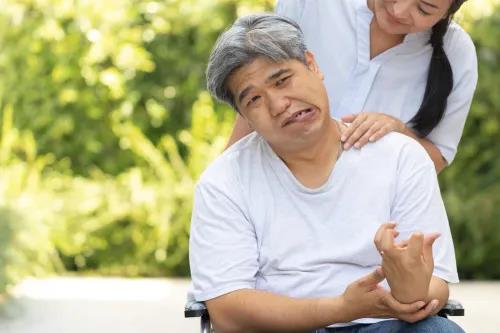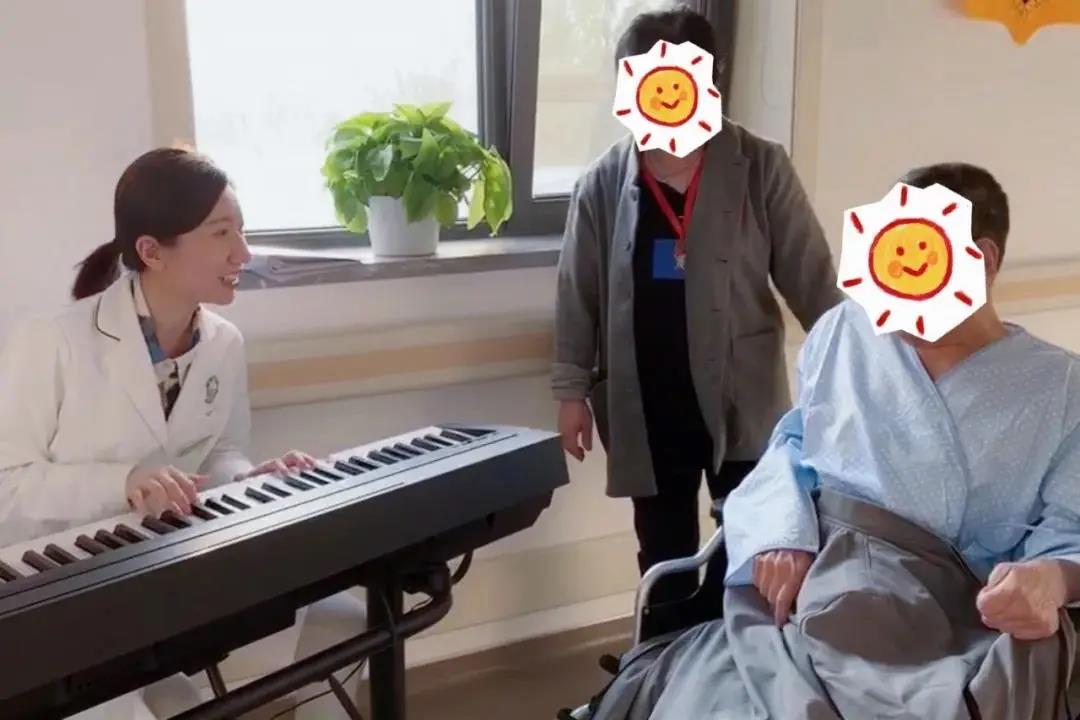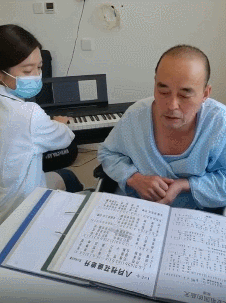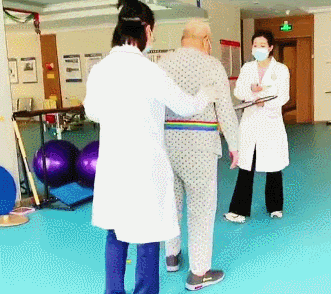Brain injury will affect patients'lifestyle, behavior and functional level. Patients will have emotional,physical, social and cognitive problems during rehabilitation.
Facing patients with brain injury such ascerebral infarction, intracerebral hemorrhage and brain trauma, musictherapists, as a member of a multidisciplinary rehabilitation team, take songsas medicine, stimulate their senses and muscles with music, train theirattention, memory and muscle strength, let them slowly learn to speak and act independently,and their psychological changes imperceptibly recover their self-confidencefrom the initial sadness and despair, and rebuild life.

Music Therapy | How to Make this MagicalProcess Happen?
Music is a powerful sensory stimulation andmulti-sensory experience. Music includes audible sound (auditory stimulation)and perceptible acoustic vibration (tactile stimulation). It can also producevisual stimulation when watching live performance. Under the background ofmusic, dance or movement can produce muscle kinesthetic stimulation. In theexperience of music structure, it can also attract and maintain people'sattention for a long time and promote people's ability of attention andconcentration. Moreover, the above various experiences are accompanied bypleasant feelings
System-trained certified music therapistscan design suitable music activities according to the functional level of eachpatient to help patients’ rehabilitation needs.

Music Therapy Intervention for CognitiveImpairment

1. Sensory stimulation
When the patient is in a coma, music can beused as a method to maximize sensory stimulation to trigger the response of thecomatose patient. We often use songs or music familiar to patients before illness.
2. Reality positioning
In the initial stage of recovery, patientswith brain injury usually have confusion and restlessness. Using music,especially the familiar and favorite music of patients, can help patients relaxand provide them with non-threatening, comfortable, safe and familiar sensorystimulation to reduce anxiety and help patients adapt to the real environment.
3. Attention training
Many domestic and foreign studies haveconfirmed that background music or using music to express non-musicalinformation can improve the range of attention and reduce distraction.Recognizing the rhythm, melody, harmony and intensity patterns in music is veryeffective for consciously and unconsciously focusing and organizing attention.Even people who have not received music training are immediately attracted tothe music they like, and immediately recognize and recall the theme of themusic. So music can be used to train brain injury patients to refocus theirattention.
4. Memory training
Music is also effective for memorytraining. Rhythm and melody are an excellent organizational structure fororganizing, memorizing and orderly language information. For example, in asong, recalling a short melody segment can induce the patient to recall a largeparagraph of words and sentences. Music therapists can effectively train thememory ability of patients with brain injury by using songs, tunes and rhythms
5. Perception training
Brain injury may lead to hearingimpairment. Music therapists use music materials to assist in hearing training.Auditory sensitivity is also the recognition of pitch, volume, timbre, singletone time value or sound pattern. It can be trained through music to improvethe memory and recognition of general hearing senses, which is very importantfor identifying speech or external environment sound.
Music Therapy Intervention for Speech Disorders

1. Melodic Intonation Therapy (MIT)
The most commonly used music therapyintervention technology for speech disorders is melodic intonation therapy(MIT), which uses the patient's unimpaired ability to sing to promote thepatient to speak spontaneously and autonomously, allowing the patient to usesimple language passages commonly used in daily life, so as to reform the modeof natural speech and pronunciation
2. Using the characteristics that it’s easyto recall the familiar music to trigger the patient's automatic lyrics responseby filling in the blanks with music, and then gradually guide the patient fromunconscious spontaneous language response to conscious and autonomous normallanguage expression.
3. For patients with dysphonia, musictherapists use training to control speaking speed and rhythm, so that patientswith dysphonia can consciously slow down their speaking speed and rhythm, whichcan get better training on pronunciation clarity, rhythm mode and musclebreathing control. Singing and reciting with appropriate speed, pronunciation,melody and rhythmic language tones will improve the language intelligibility ofpatients with dysphonia.
Music Therapy Intervenes in Motor Dysfunctionof Limbs
Music therapists can combine exercises andmusic during limb rehabilitation of patients with brain injury, and providepatients with therapeutic exercises and activities with goals, organizationalstructure and conducive to physical function.
Common Application Methods
Music can be used to provide signals ofrhythm, speed, stress and muscle movement. A very important way of good,coordinated movement is to master the correct time value.
Music therapists provide rhythmicstimulation to improve the patient's walking style or carry out physical trainingwith appropriate music, such as shoulder extension movement, upper limb andhand movement

2. Train physical functions by playingmusical instruments and carry out functional exercises, such as finger, hand,arm, shoulder, leg and mouth muscles.
Music therapists match musical instrumentsaccording to the patient's current physical strength and weakness, andaccording to the appropriate posture and movement required by the patient'sphysical ability, so as to exercise the patient's impaired specific physicalmotor functions. For example, playing keyboard musical instruments is conduciveto finger flexibility, playing percussion musical instruments can train handeye coordination, bilateral upper limb coordination, and improve shoulder, rangeof motion of elbow and wrist, or increase muscle strength, etc.

Music Therapy Intervenes in SocialEmotional Disorders
After illness, patients with brain injuryexperience anxiety and depression due to changes in quality of life. Pleasantand rewarding music experience can alleviate patients' anxiety and providepositive emotional experience.
Music therapy can help patients cope withnew lifestyles, help patients find new and compensatory lifestyles, and shouldnot pay more attention to the impairment of limb function. If patients arealways in the stage of denial, rejection or despair, they can't cope with thenew lifestyle. Music therapists use music experience during treatment toprovide a channel for patients to express their feelings of sadness or pain andguide their hope and vitality for life.
Group music therapy can also meet the needsof social communication and let patients become a member of the supportingteam, which is very important to support rehabilitation treatment. Patients canalso be invited to participate with their families.

